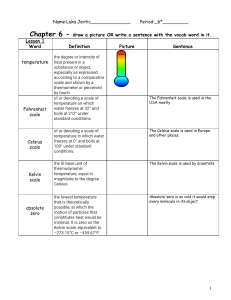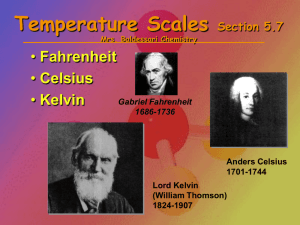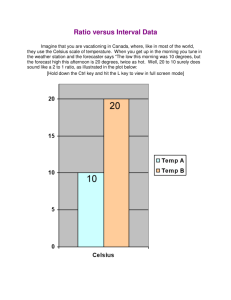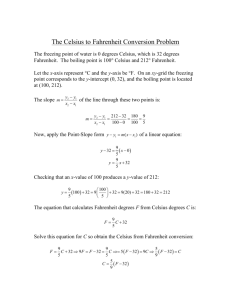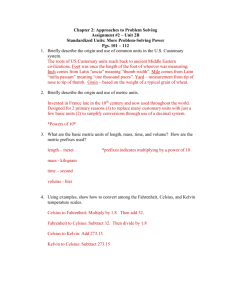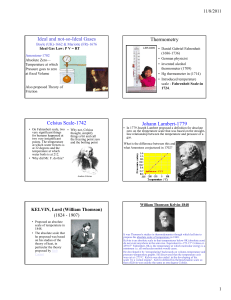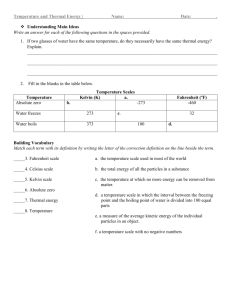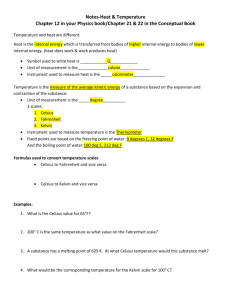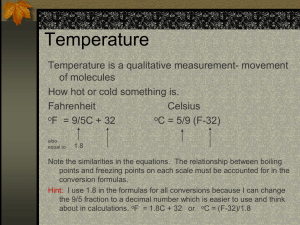Animal Diversity Quiz - Marshall University Personal Web Pages
advertisement
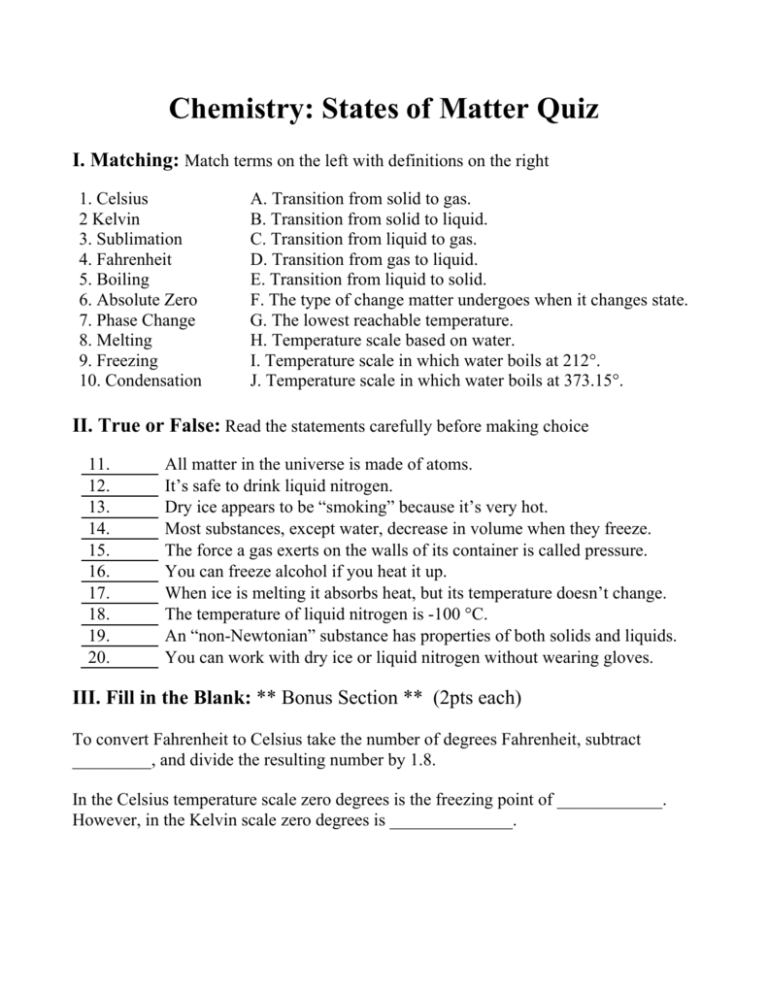
Chemistry: States of Matter Quiz I. Matching: Match terms on the left with definitions on the right 1. Celsius 2 Kelvin 3. Sublimation 4. Fahrenheit 5. Boiling 6. Absolute Zero 7. Phase Change 8. Melting 9. Freezing 10. Condensation A. Transition from solid to gas. B. Transition from solid to liquid. C. Transition from liquid to gas. D. Transition from gas to liquid. E. Transition from liquid to solid. F. The type of change matter undergoes when it changes state. G. The lowest reachable temperature. H. Temperature scale based on water. I. Temperature scale in which water boils at 212°. J. Temperature scale in which water boils at 373.15°. II. True or False: Read the statements carefully before making choice 11. 12. 13. 14. 15. 16. 17. 18. 19. 20. All matter in the universe is made of atoms. It’s safe to drink liquid nitrogen. Dry ice appears to be “smoking” because it’s very hot. Most substances, except water, decrease in volume when they freeze. The force a gas exerts on the walls of its container is called pressure. You can freeze alcohol if you heat it up. When ice is melting it absorbs heat, but its temperature doesn’t change. The temperature of liquid nitrogen is -100 °C. An “non-Newtonian” substance has properties of both solids and liquids. You can work with dry ice or liquid nitrogen without wearing gloves. III. Fill in the Blank: ** Bonus Section ** (2pts each) To convert Fahrenheit to Celsius take the number of degrees Fahrenheit, subtract _________, and divide the resulting number by 1.8. In the Celsius temperature scale zero degrees is the freezing point of ____________. However, in the Kelvin scale zero degrees is ______________.
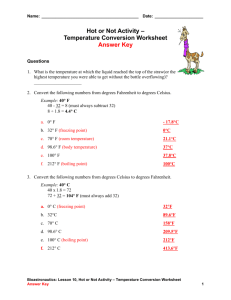

![Temperature Notes [9/22/2015]](http://s3.studylib.net/store/data/006907012_1-3fc2d93efdacd086a05519765259a482-300x300.png)
